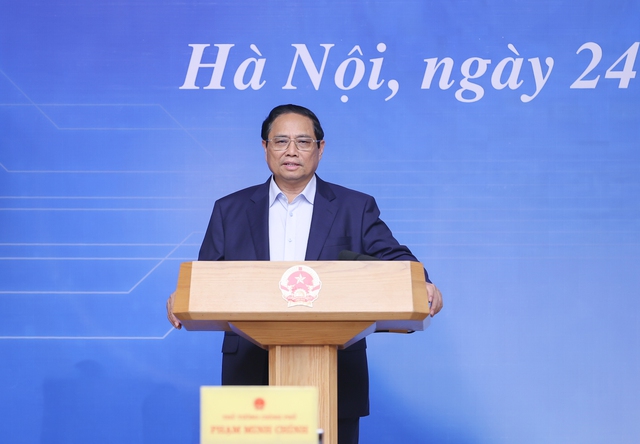Viet Nam needs to develop human resources for semiconductor industry
VGP - Prime Minister Pham Minh Chinh asked for breakthrough in semiconductor workforce development with the goal of having from 50,000-100,000 semiconductor integrated circuit engineers by 2030.

Prime Minister Pham Minh Chinh chairs a meeting on development of human resources serving the semiconductor industry, Ha Noi, April 24, 2024 - Photo: VGP
Pham chaired a meeting on April 24 to discuss the development of human resources serving the semiconductor industry, with the participation of Deputy Prime Minister Tran Hong Ha and Prime Minister Tran Luu Quang, among others.
Speaking at the event, Pham noted that Viet Nam has established the National Innovation Center (NIC), Saigon Hi-tech Park, Hoa Lac Hi-Tech Park and many IT parks.
Viet Nam's ambitions to develop the semiconductor industry have already garnered international attention and support. The country has signed a Memorandum of Understanding with the U.S. to cooperate in developing the semiconductor ecosystem, with a particular focus on human resources development.
Global technology giants like NVIDIA and Samsung have also expressed interest in investing in Viet Nam's semiconductor industry, recognizing the country's potential as a future production hub.
These are important premises and favorable opportunities for the country to participate in the semiconductor industry through high-quality human resources development, Pham said.
Viet Nam is racing against time to capitalize on a golden opportunity to establish itself as a powerhouse in the global semiconductor industry.
The Ministry of Information and Communications (MIC) forecasts that the Vietnamese semiconductor industry would be valued at US$20-30 billion by 2030.
However, only two local firms, FPT and Viettel, are engaging in this market at the very first stage, out of a total of more than 50 eligible companies in the country.
Viet Nam is yet to have any manufacturing facilities, except for packaging and testing factories which have been set up by large international corporations such as Intel or Amkor.
Policymakers anticipate that the country, nestled with abundant resources for the semiconductor industry, will hold a certain position in the global semiconductor chip map, a specialized club of countries with an annual average GDP per capita of over US$11,000 which is nearly three times that of Viet Nam./.
